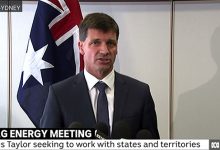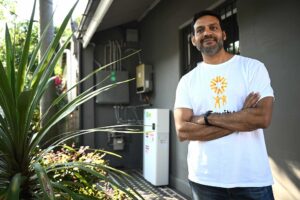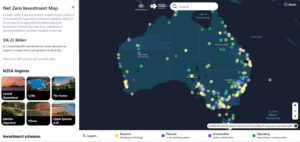The federal Coalition government – backed by conservative states – has taken the extraordinary step of voting down a push to have climate change considered as part of the framing of the country’s energy policy agenda.
The ACT government proposed at the COAG energy ministers meeting in Sydney on Friday working to develop a suitable greenhouse gas emissions reduction mechanism for the electricity sector.
It follows the decision by the federal government to dump the emissions component of the proposed National Energy Guarantee, and to abandon plans to have the current Paris target – a 26-28 per cent cut in emissions from 2005 levels by 2030 – written into the legislation.
But it was knocked back along party lines. The ACT won support from labor states – Victoria, Queensland and Western Australia – but NSW, South Australia and Tasmania supported the federal Coalition’s decision to keep climate out of energy policy.
“It is very disappointing. All we were doing is asking for options to be put on the table,” ACT minister Shane Rattenbury told reporters after the meeting.
Queensland energy minister Anthony Lynham was equally damming:
“It is unfathomable that, in 2018, Australia does not have a credible emissions reduction framework, despite stakeholders across the spectrum united in their desire for one. The Commonwealth is clearly dominated by climate change deniers.’’
Rattenbury said in a statement that reducing greenhouse gas emissions from the energy sector must be core work of the energy council if Australia is to genuinely address climate change, and to ensure electricity reliability and reduce power prices.
“One of the great ironies is that taking action on climate change, and supporting more renewable energy, will help to bring down power prices. The federal government won’t be able to fulfil its promise of affordable power bills unless it takes its head out of the sand and deals with emissions.”
The ACT’s request echoes the call this week from a wide range of Australian stakeholders for the COAG Energy Council to address emissions as an essential part of achieving cost reductions. These included doctors, a coalition of business, energy and consumer groups, and also a recognition by company directors that climate change should be a major focus for boards.
Asked about the vote at the conclusion of the COAG meeting, held at a hotel near Sydney Airport, federal energy minister Angus Taylor cited the success of the renewable energy target, a policy mechanism he tried for years to kill.
“We are going to see a 250 per cent increase in wind and solar in the National Electricity Market in the next three years …. That is $15 billion in new renewables, wind and solar, and the result that is that we will see sharp reductions in emissions.
“That is why we will meet … the Paris climate targets … in a canter.” It should be noted, what that actually means is that the electricity sector will meet its share, but not the whole economy. Official data shows economy-wide emissions heading in the opposite direction.
It should also be noted that government officials this week told Senate Estimates that there was no doubt that the influx of wind and solar had, and would continue to bring down prices from where they would otherwise be, as this exchange revealed:
Senator KENEALLY: Would it be correct to say that a large reason for this fall is the expected impact of investment in renewable energy that we’ve seen under the Renewable Energy Target?
Rob Heferen (deputy secretary, energy): Yes, clearly. The extra supply coming online reduces the wholesale price. It isn’t necessarily a linear approach as we’ve seen in the past, where the new investment comes in and the wholesale price goes down, and then we saw the situation where both the Northern Power Station and Hazelwood closed, and then the wholesale price went back up again. It seems now that the wholesale price is back on its way down.
Senator KENEALLY: The government does point out that the electricity sector will meet its 26 per cent emissions reduction target on 2005 levels by 2030 and most of that will, in fact, be met in the early 2020s. What contribution has the RET made to meeting this target?
Heferen: The minister’s been very clear that the 26 per cent below 2005 level will be met in the National Electricity Market, not the electricity sector more broadly. So, when he speaks, he will be talking about the NEM.
The ACT proposal made to COAG was simple enough, if a little provocative to a government that does not want to know about emissions, despite the latest by-election result in Wentworth and the loss by Liberals of two seats in the last two months to independents championing action on climate.
To underline this point, Rattenbury posted the drink coasters placed by the hotel in the COAG meeting room on his Instagram account.
The ACT proposed to “… task the Energy Security Board to prepare policy advice on a mechanism to introduce an electricity sector emissions reduction obligation into the National Electricity System, to assess the effect of such changes in reducing energy prices, and to provide an update on progress at the December 2018 meeting.”
One of the first acts of the new prime minister, Scott Morrison, was to split the environment and energy portfolios, and task Taylor with bringing down prices.
One of those initiatives is the setting of a lower “default” price, although many energy companies and private analysts warn that bringing the price down too low may actually kill competition rather than increase it, and ultimately force prices up for most consumers.
Further work on the default price will be prepared for the December meeting, although Victoria (which plans to introduce its own), Western Australia and the Northern Territory noted any such default price would not apply in their jurisdictions.
The ministers also agreed that the AEMC – the market rule-maker – should undertake work on the impacts of the Commonwealth’s proposed default tariff on competition issues and customer impacts. It has previously opposed such a price.
Meanwhile, the COAG ministers agreed to that the ESB should progress development of Retailer Reliability Obligation, and will return to Council with a final draft Bill for decision in December 2018.
The COAG communique also said ministers had asked the ESB to provide advice on a “long- term, fit-for-purpose market framework to support reliability that could apply from the mid 2020’s as the market transitions.” The ESB will report back to Council in December 2018 on a forward work program for endorsement.









